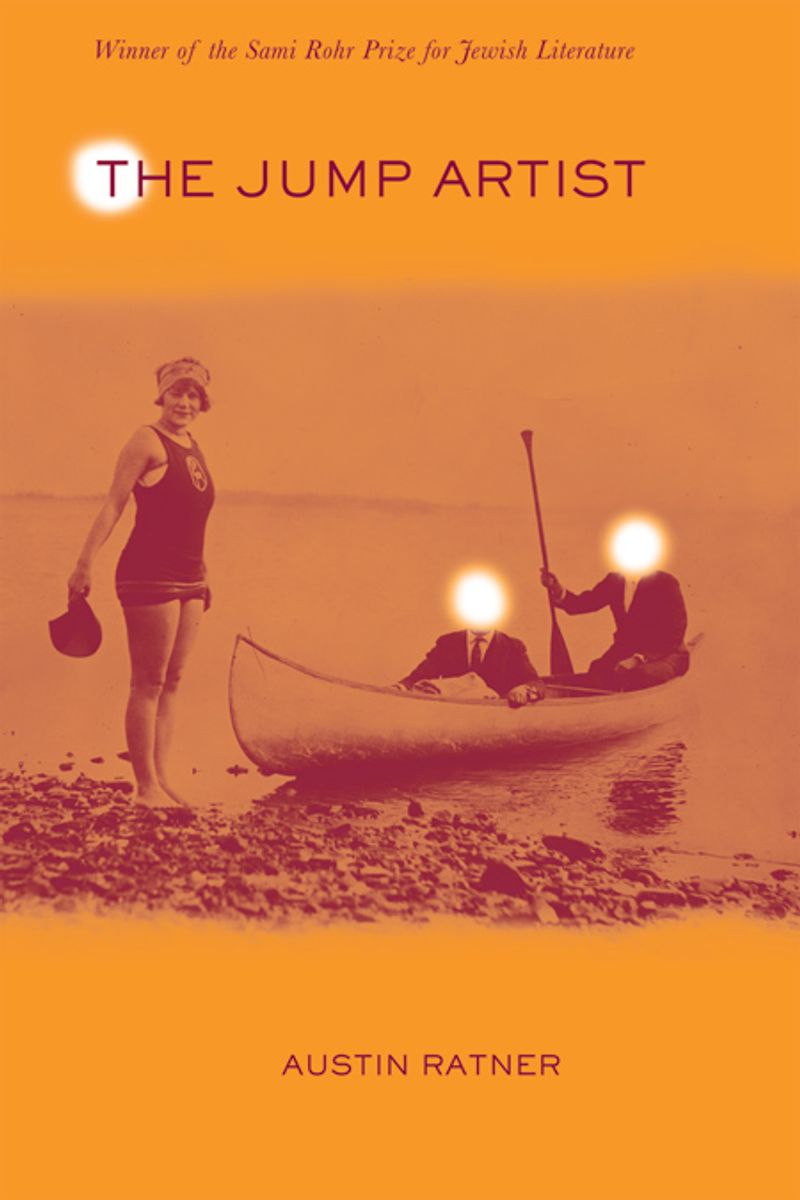This elegantly-written tribute makes as beautiful a use of the darkness and light of one man’s life, as a Halsman photograph of a pretty young woman.
The Jump Artist
Philippe Halsman is famous for his photographs of celebrities jumping in the air, for putting Marilyn Monroe (among countless others) on the cover of Life Magazine, and for his bizarre collaborations with surrealist Salvador Dalí (“Dalí Atomicus,” Dalí’s Mustache). What is not well known is his role in the “Austrian Dreyfus Affair,” which rocked Europe in the years leading up to WWII. While hiking in the Tyrolean Alps, Philippe’s father was brutally murdered when Philippe went ahead on the trail. The year was 1928, Nazism was on the rise and Philippe, a Jewish 22 year old from Latvia, was charged with the murder. He spent several years in an Austrian prison and the trial became a public scandal that pitted many prominent intellectuals, including Albert Einstein and Sigmund Freud, against the rising tide of fascism.
The Jump Artist is evocative psychological fiction based on this true story. Austin Ratner has extensively researched Halsman’s life and tells the extraordinary tale of a man who transforms himself from a victim of rampant anti-Semitism into a purveyor of the marvelous.
Winner of the Sami Rohr Prize for Jewish Literature

Ebook
- ISBN
- 9781934137277
Paperback
- ISBN
- 9781934137154
“Everything I do is in genuine pursuit of truth and beauty.” Austin Ratner, author of The Jump Artist, talks to the New York Times about giving up a career in medicine to move to Brooklyn and become a fiction writer.
Austin Ratner is author of the novels The Jump Artist, which received the Sami Rohr Prize for Jewish Literature, and In the Land of the Living. His nonfiction has appeared in the New York Times Magazine and his short fiction has been honored with the Missouri Review Editors’ Prize. Before turning his focus to writing and attending the University of Iowa Writers’ Workshop, he received his M.D. from the Johns Hopkins School of Medicine and co-authored the textbook Concepts in Medical Physiology. Ratner grew up in Cleveland, Ohio and now lives in Brooklyn, New York with his wife and two sons.
visit author page »Praise for The Jump Artist
Fortunately, in Ratner’s hands, all this material is transmuted into engaging fiction, not pedantic reportage. The novel’s protagonist feels like a thoughtful presence; we understand the historical material through Philipp’s perspective, which is well measured, complicated, convincingly dark.
Ratner. . . vividly depicts his character’s ordeal and amazing recovery from the trauma of the event.
— The Morning News
Ratner uses a historical figure to discuss the trepidations felt throughout a Europe aware that the future was unknowable yet around the corner. It is this confusion, on an individual and collective level, that allows the novel to transcend the bounds of historical fiction. Ratner describes the era well, but his more substantial achievement is in the creation of a character that history already knows.
— Booklist
The book is a beautiful, if dark, psychological portrait of a man suffering under the weight of his own doubts, as well as the world events that have deeply personal consequences for him.
— Cedar Rapids Gazette
Ratner’s brilliant first novel . . . presents a fascinating tribute to the ‘jump artist’ through the prism of a dark and horrific time in European history.
— Cleveland Jewish News
After reading The Jump Artist, I was overwhelmed by Austin’s talent as a novelist …[he] has written a compelling, must-read book whose subject matter has universal appeal, especially in these troubling times.
— Deedra Dolin, The Mandel JCC Festival of Jewish Books & Authors
A beautifully scrupulous, intricately detailed novel about joy and despair, anti-Semitism and assimilation, and like a great photograph, it seems to miss nothing, and to catch its subject in all his complexity.
— Charles Baxter, author of The Feast of Love and The Soul Thief

